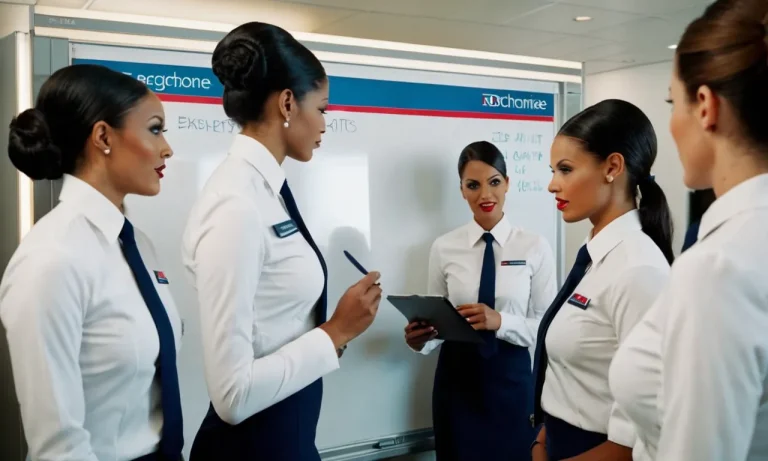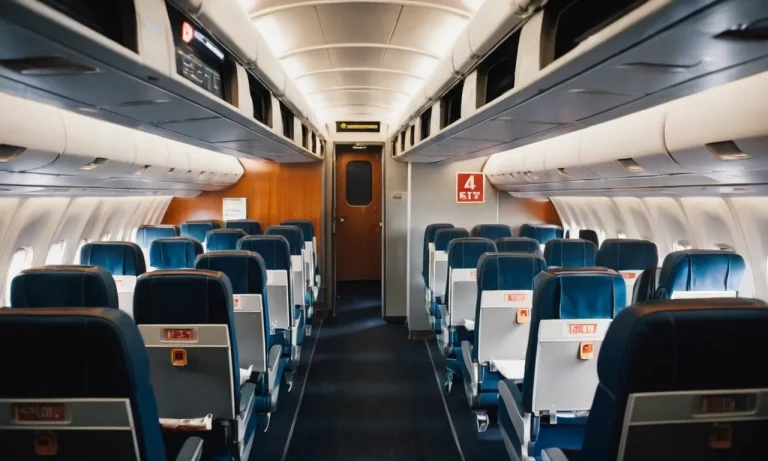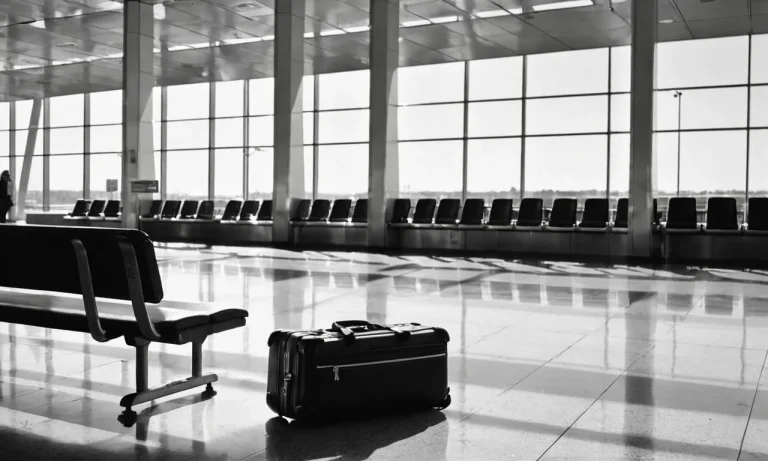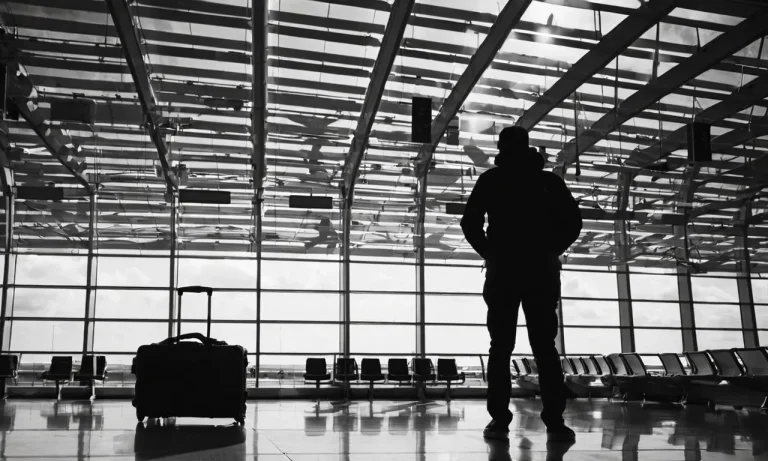3 Major Threats In Air Transport
Air travel has become an indispensable mode of transport in our increasingly interconnected world. However, the rapid growth of aviation also brings major safety and security threats that could severely disrupt operations.
If you’re short on time, here’s a quick answer to the major threats in air transport: extreme weather events, cybersecurity attacks, and geopolitical conflicts.
In this comprehensive article, we will analyze the 3 most critical dangers that civil aviation faces in detail, including real-world examples and statistics. We will also discuss their potential impacts and how the aviation industry is working to mitigate them.
Extreme Weather Events
Extreme weather events pose a significant threat to air transport, impacting the safety and efficiency of flights. These events can disrupt flight schedules, damage aircraft, and pose risks to passengers and crew members. Here are three major threats associated with extreme weather events:
Increased turbulence and storms
With the changing climate patterns, turbulence and storms have become more frequent and intense. Turbulence is a major concern for airlines as it can result in injuries to passengers and crew members. According to the Federal Aviation Administration (FAA), turbulence is the leading cause of injuries to passengers and flight attendants.
Pilots rely on weather data and forecasts to avoid turbulent areas, but with the unpredictability of storms, it can be challenging to navigate around them.
Heat waves and extreme temperatures
Heat waves and extreme temperatures can impact the performance of aircraft and airport operations. High temperatures can reduce aircraft lift, making takeoffs and landings more challenging. It can also affect engine efficiency and increase fuel consumption.
Moreover, extreme temperatures can cause delays or cancellations as airports need to take precautions to ensure the safety of passengers and crew members. For example, in extremely hot weather, the tarmac can become too hot for ground crew to work on, leading to delays in baggage handling and other ground services.
Heavy precipitation and flooding
Heavy precipitation and flooding can cause significant disruptions to air travel. Excessive rain and flooding can render runways and taxiways unsafe, leading to flight cancellations or diversions. Moreover, heavy rain can impact the visibility for pilots during takeoff and landing, requiring additional precautions and potentially leading to delays.
In the case of flash floods, airports may have to temporarily shut down operations, affecting numerous flights and causing inconvenience to passengers.
Cybersecurity Attacks
Cybersecurity attacks pose a significant threat to the air transport industry, with hackers constantly finding new ways to exploit vulnerabilities in airline IT systems. These attacks can have devastating consequences, compromising passenger safety and disrupting operations.
Hacking airline IT systems
One major concern is the hacking of airline IT systems, which can grant unauthorized access to critical data and control systems. This can lead to a myriad of issues, such as stealing sensitive passenger information, manipulating flight data, or even gaining control over aircraft systems.
The potential consequences of such attacks are alarming, as they can jeopardize passenger safety and result in significant financial losses for airlines.
Jamming satellite navigation
Another cybersecurity threat in air transport is the jamming of satellite navigation systems. Satellites play a crucial role in providing accurate positioning and navigation information to aircraft. However, hackers can disrupt these signals, leading to potential navigation errors and loss of situational awareness for pilots.
This can result in serious accidents or incidents if pilots are unable to rely on accurate navigation data.
Interfering with air traffic control
Cyberattacks can also target air traffic control systems, posing a significant risk to the safe and efficient operation of air transport. By compromising these systems, hackers can disrupt communication between aircraft and controllers, leading to confusion, delays, and potential collisions.
The consequences of such attacks can be catastrophic, highlighting the urgency for robust cybersecurity measures in the air traffic control sector.
It is crucial for the air transport industry to constantly evolve its cybersecurity strategies to stay ahead of potential threats. Airlines, airports, and air traffic control authorities must invest in advanced technologies and employ cybersecurity experts to detect and prevent cyberattacks.
Regular audits, training programs, and collaboration with cybersecurity organizations can also enhance the industry’s preparedness and resilience against cyber threats.
Geopolitical Conflicts
Geopolitical conflicts pose a significant threat to air transport, impacting both the safety and efficiency of the industry. These conflicts can arise between nations, leading to airspace closures, terrorism and sabotage risks, as well as economic sanctions and trade wars.
Airspace closures
During times of geopolitical conflicts, airspace closures become a common occurrence. This can disrupt flight routes and lead to delays or cancellations of flights. Airspace closures are usually implemented as a precautionary measure to ensure the safety of aircraft and passengers.
They can be temporary or prolonged, depending on the severity of the conflict. For example, recent conflicts in the Middle East have resulted in the closure of airspace and rerouting of flights.
Terrorism and sabotage risks
Terrorism and sabotage risks are heightened during periods of geopolitical conflicts. Airports and aircraft become potential targets for extremist groups or individuals seeking to cause harm and disrupt air travel.
These threats can range from hijackings and bombings to cyber-attacks targeting critical aviation infrastructure. Airlines and aviation authorities constantly work together to enhance security measures and intelligence sharing to mitigate these risks.
Economic sanctions and trade wars
Geopolitical conflicts can also result in economic sanctions and trade wars between nations. These measures can impact air transport by restricting airlines’ access to certain markets and imposing trade barriers on aviation-related goods and services.
For example, economic sanctions imposed on Iran in the past have limited the ability of Iranian airlines to purchase new aircraft or acquire spare parts, affecting their operations and safety standards.
To stay updated on geopolitical conflicts and their impact on air transport, industry professionals and travelers can refer to reliable sources such as International Civil Aviation Organization (ICAO) and International Air Transport Association (IATA).
These organizations provide valuable information and guidance on navigating through these challenges and ensuring the safety and security of air travel.
Conclusion
In conclusion, delivering safe and efficient air transport requires aviation stakeholders to closely monitor and mitigate the 3 major threats we have discussed.
While extreme weather is difficult to control, airlines and airports should invest in climate resilience. Robust cybersecurity defenses and emergency response plans are also crucial.
Finally, nations must cooperate diplomatically to prevent geopolitical tensions from escalating into aviation crises. The sky belongs to no one – preserving its accessibility benefits all humankind.








